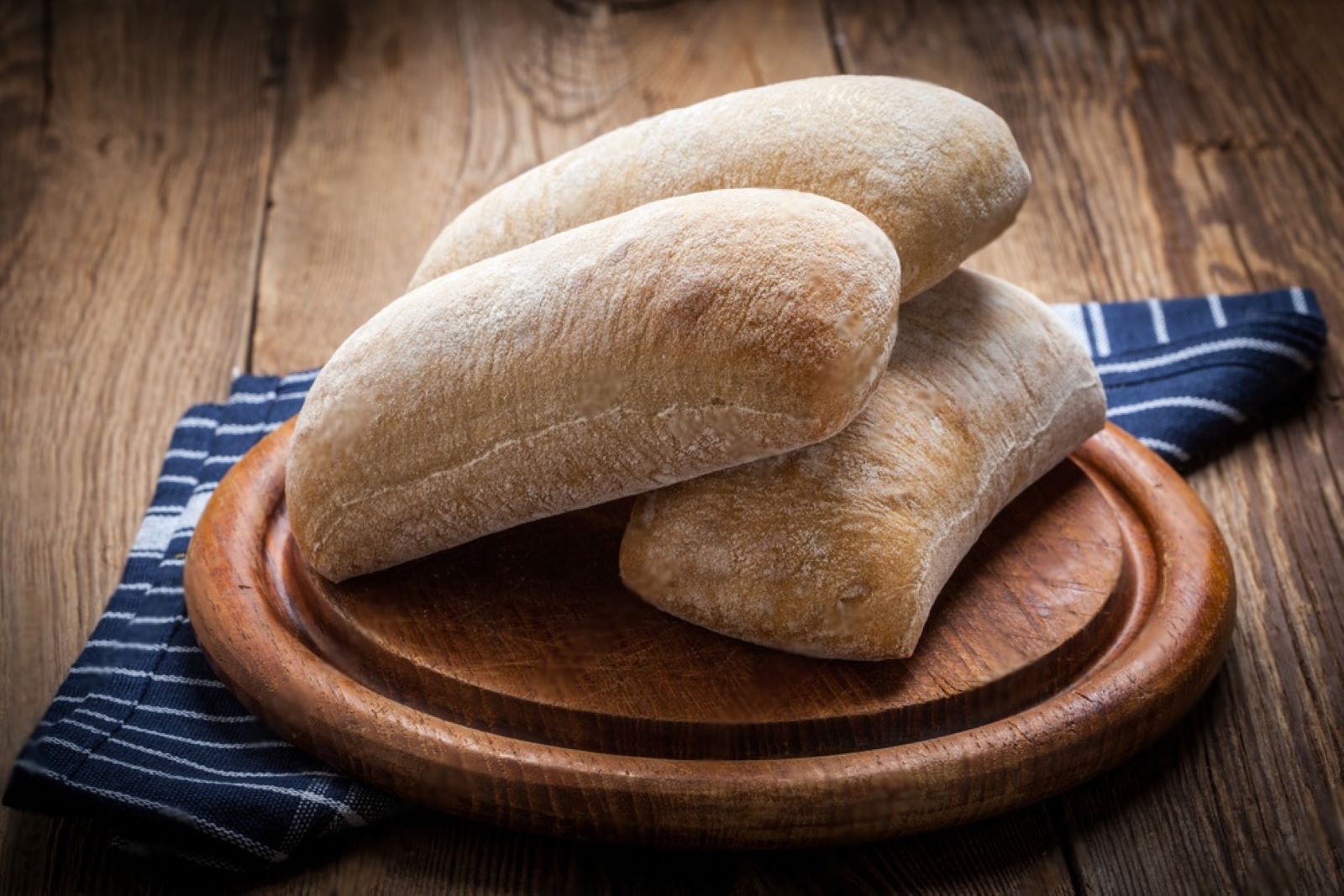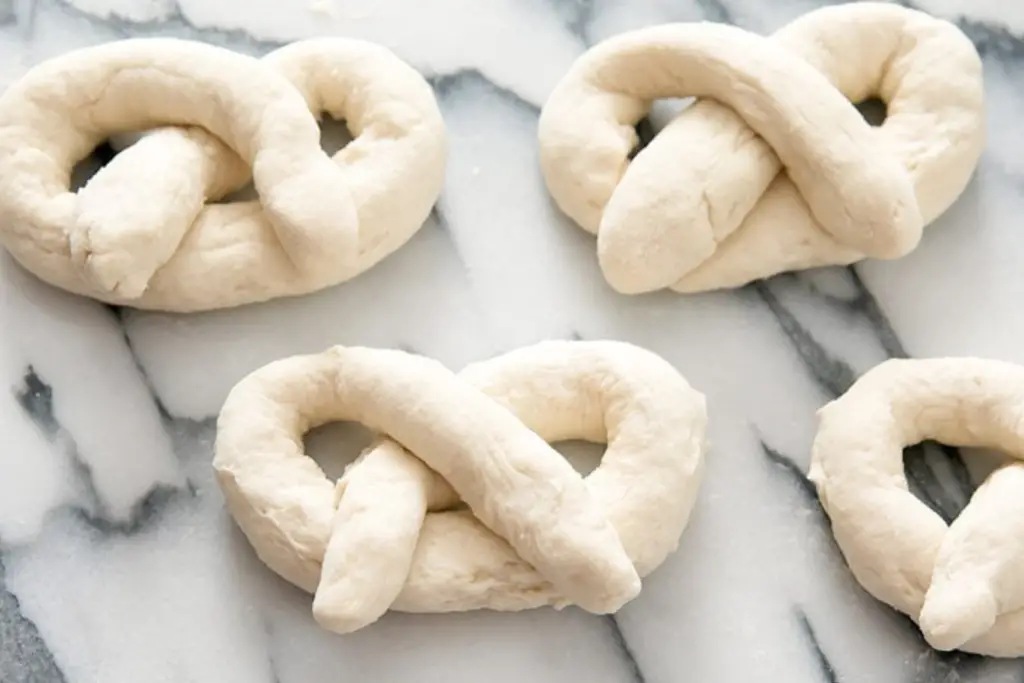
Ciabatta bread, a rustic and crusty Italian loaf, is renowned for its airy texture and distinct flavor. With its irregular shape and generous holes, ciabatta is a versatile bread that is perfect for sandwiches, bruschetta, and paninis. Whether you’re enjoying it fresh out of the oven or using it as a base for your favorite toppings, ciabatta bread delivers a satisfying and authentic taste experience. However, if you have leftover ciabatta or want to stock up on this delicious bread for future use, freezing is a practical solution. Freezing ciabatta bread allows you to preserve its freshness and quality, ensuring that you can enjoy the taste and texture of this artisanal loaf whenever you desire. In this guide, we will explore the best practices for freezing ciabatta bread, from proper wrapping techniques to storage tips, so you can have a supply of ready-to-thaw loaves on hand for your culinary adventures. Join us as we uncover the secrets of freezing ciabatta bread and discover the convenience of having this delectable bread available whenever you need it.
Here are the simple steps to freeze ciabatta bread:
Step 1: Select Fresh Ciabatta Bread
The first step in freezing ciabatta bread is to choose a loaf that is fresh and in optimal condition. It’s important to select ciabatta bread that is free from any signs of mold or spoilage. The quality of the bread you start with will directly affect the quality of the frozen bread.
Choosing fresh ciabatta bread ensures that you freeze a product that is at its best, both in terms of taste and texture. Fresh bread will have a soft, airy interior and a crisp crust, which is the characteristic texture of ciabatta. If the bread is already stale or of poor quality before freezing, it won’t improve during the freezing process.
Inspect the loaf carefully before purchasing or using it for freezing. Look for any visible signs of mold, such as dark spots or discoloration, and avoid bread that appears moist or has a foul smell. Fresh ciabatta bread should have a slightly firm crust, and when pressed gently, it should bounce back rather than leaving an indentation.
By starting with fresh ciabatta bread, you set a solid foundation for preserving its taste and texture during the freezing process. The quality of the bread at the beginning will contribute to the quality of the bread once it’s thawed and ready to be enjoyed.
Step 2: Slice the Bread (optional)
When freezing ciabatta bread, you have the option to slice it before placing it in the freezer. Slicing the bread can provide convenience and flexibility when it comes to thawing and using individual portions. However, it’s important to note that this step is optional, and you can choose to freeze the whole loaf if you prefer.
Slicing the ciabatta bread before freezing can be beneficial for several reasons. It allows you to portion the bread according to your needs, making it easier to thaw and use only the amount you require at a given time. This can be especially useful if you plan on using the bread for sandwiches, bruschetta, or other recipes that call for specific amounts.
By slicing the bread beforehand, you can also save time and effort when it comes to thawing. You won’t need to thaw the entire loaf if you only need a few slices. Simply take out the desired number of slices from the freezer and allow them to thaw at room temperature.
However, if you prefer to slice the ciabatta bread after thawing, that is perfectly acceptable as well. Freezing the whole loaf can be more suitable if you anticipate using the bread in its entirety or if you prefer to slice it fresh for a crustier texture.
Ultimately, whether you choose to slice the bread before freezing or freeze it as a whole loaf depends on your personal preferences and how you plan to use the bread after thawing.
Step 3: Wrap the Bread
To ensure the optimal preservation of ciabatta bread during freezing, it is important to wrap it tightly to protect it from freezer burn and moisture loss. There are two commonly used materials for wrapping ciabatta bread: plastic wrap and aluminum foil. Whichever material you choose, the goal is to create a seal that prevents air from entering and keeps the bread fresh.
Start by placing the ciabatta bread on a clean and flat surface. If you have sliced the bread, you can either wrap the slices individually or wrap the entire loaf as a whole.
If using plastic wrap, carefully wrap the bread by pulling the plastic tightly around it. Ensure that the entire loaf or slices are covered, leaving no gaps or exposed areas. The plastic wrap should adhere tightly to the bread’s surface, forming a protective barrier against air and moisture.
Alternatively, you can use aluminum foil to wrap the ciabatta bread. Similar to plastic wrap, wrap the loaf or slices tightly with aluminum foil, ensuring complete coverage. The foil should be wrapped securely to prevent air from reaching the bread.
Both plastic wrap and aluminum foil are effective in preserving the ciabatta bread’s freshness and texture during freezing. They act as barriers, preventing moisture loss and the formation of ice crystals that can lead to freezer burn.
By wrapping the ciabatta bread properly, you are taking an essential step to protect its flavor and texture, ensuring a delicious and fresh product when it’s time to thaw and enjoy it.
Step 4: Place in a Freezer Bag
After wrapping the ciabatta bread in plastic wrap or aluminum foil, an additional step you can take to enhance its protection during freezing is to place it in a freezer bag. The freezer bag provides an extra layer of insulation and helps maintain the bread’s freshness while preventing freezer burn.
Start by selecting a freezer bag that is appropriate for the size of the wrapped ciabatta bread. Choose a bag that is durable, thick, and specifically designed for freezer storage to provide the best preservation.
Gently place the wrapped ciabatta bread into the freezer bag, making sure it fits comfortably without being squished or bent. It’s important to avoid any sharp edges or objects that could puncture the bag and compromise the bread’s integrity.
Once the bread is inside the bag, carefully squeeze out as much excess air as possible before sealing it. Removing excess air helps prevent the formation of ice crystals and reduces the risk of freezer burn, which can negatively impact the texture and flavor of the bread.
Seal the freezer bag tightly, ensuring that it is completely closed to maintain a protective barrier around the bread. This will help keep the bread fresh and prevent any air or moisture from entering.
Placing the wrapped ciabatta bread in a freezer bag provides an additional layer of insulation and protection against temperature fluctuations in the freezer. It creates a controlled environment that helps preserve the bread’s texture, taste, and overall quality during the freezing process.
By taking proactive measures to safeguard the ciabatta bread from freezer burn and maintain its freshness, allowing you to enjoy delicious and preserved bread whenever you’re ready to thaw and use it.
Step 5: Label and Date the Package
When freezing ciabatta bread, it’s important to label and date the package to keep track of its storage time. This simple step allows you to have better organization in your freezer and ensures that you use the oldest loaf first when retrieving bread for consumption.
Using a marker or a label, write the date of freezing on the package. You can include the month, day, and year to provide a clear reference point. This will help you easily identify when the bread was frozen and determine its freshness.
By labeling and dating the package, you create a system that promotes rotation and prevents the bread from being forgotten in the freezer. This is particularly important if you frequently freeze bread or have multiple loaves stored at different times.
When it’s time to enjoy the frozen ciabatta bread, you can refer to the labels to identify the loaf that has been stored the longest. This ensures that you prioritize using the oldest bread first, maintaining the quality and taste of the bread while minimizing waste.
Additionally, labeling and dating the package also helps in keeping track of the bread’s storage time. Depending on the type of bread and storage conditions, frozen ciabatta bread typically remains at its best quality for a certain period. By knowing the freezing date, you can estimate the recommended storage time and ensure you consume the bread within that period for optimal taste and texture.
Taking a few seconds to label and date the package may seem like a small task, but it can greatly contribute to an organized freezer and a better overall experience when using the frozen ciabatta bread.
Step 6: Freeze the Bread
Once the ciabatta bread is properly wrapped and labeled, the next step is to place it in the freezer for freezing. Proper placement and handling of the packaged bread will help maintain its shape, texture, and quality during the freezing process.
When placing the packaged ciabatta bread in the freezer, ensure it is positioned in a flat and stable manner. Placing it flat helps maintain the bread’s shape and prevents it from getting squished or deformed. It is important to give the bread enough space to avoid unnecessary pressure or compression.
Avoid stacking other items on top of the bread to prevent it from being flattened or damaged. Placing heavy items or other frozen goods on top of the bread can result in a loss of its light and airy texture, affecting its overall quality once thawed.
Properly spacing and organizing the frozen bread in the freezer also facilitate easy access and retrieval when needed. It helps prevent unnecessary handling or shifting of items, reducing the risk of damaging the bread or causing it to thaw and refreeze, which can negatively impact its texture and taste.
By placing the packaged ciabatta bread in the freezer in a flat position without stacking other items on top, you ensure that the bread maintains its shape, texture, and overall quality throughout the freezing process. This careful handling and placement contribute to a better frozen product and a more enjoyable experience when it’s time to thaw and use the bread.
How long can ciabatta bread last in the freezer?
Ciabatta bread can last in the freezer for up to 3 months without a significant decline in quality. Properly stored and sealed in airtight packaging, the bread can retain its flavor, texture, and freshness during this period. It is important to label the package with the freezing date to keep track of its storage time and prioritize consuming the oldest bread first.
Step 7: Thaw the Frozen Ciabatta
After the ciabatta bread has been frozen and you’re ready to enjoy it, it’s time to thaw the bread before consuming. Thawing the bread properly ensures that it regains its softness and delightful texture. Here’s how to thaw and enjoy the frozen ciabatta bread:
- Remove the bread from the freezer: Take the packaged ciabatta bread out of the freezer and carefully unwrap it, removing any plastic wrap or aluminum foil.
- Thaw at room temperature: Place the unwrapped ciabatta bread on a clean surface or a wire rack at room temperature. Allow the bread to thaw naturally without applying any heat sources. Thawing at room temperature helps the bread regain its moisture and softness. The time required for thawing will depend on the size and thickness of the bread. Typically, ciabatta bread takes a couple of hours to thaw completely.
- Optional: Reheat for a crusty texture: If desired, you can restore the crusty texture of the ciabatta bread by reheating it in the oven. Preheat the oven to a moderate temperature (around 350°F or 180°C). Place the thawed bread directly on the oven rack or on a baking sheet. Heat it for a few minutes, usually 5-10 minutes, until the crust becomes crisp. Keep an eye on the bread while reheating to prevent it from getting too dark or burnt.
By properly following the steps, you can safely thaw the frozen ciabatta bread and enjoy it in its full glory, whether you prefer it as is or with a beautifully restored crusty texture.
Other related questions
Can you refreeze ciabatta bread?
Refreezing ciabatta bread is generally not recommended. Once the bread has been thawed, it undergoes changes in texture and moisture content, which can lead to a decline in quality upon refreezing. It is best to consume the thawed ciabatta bread or use it in recipes promptly to ensure the best taste and texture.
How do I know if the ciabatta bread has gone bad after being frozen?
To determine if frozen ciabatta bread has gone bad, look for signs of spoilage such as mold growth, unusual odors, or a significant change in texture. If the bread exhibits visible mold, discoloration, or an off-putting smell, it is likely spoiled and should not be consumed. Additionally, if the bread becomes excessively dry, mushy, or develops a stale taste, it may have deteriorated in quality and is best discarded.
Are there any differences in freezing techniques for different types of ciabatta bread (e.g., plain vs. flavored)?
The freezing techniques for different types of ciabatta bread, such as plain vs. flavored varieties, are generally similar. However, there may be some slight differences to consider. Flavored ciabatta bread, like garlic or herb-infused varieties, may have additional ingredients that can affect texture and flavor when frozen. It is important to ensure the bread is fully cooled before freezing and properly package it to prevent freezer burn. Additionally, note that flavored ciabatta bread may have a shorter shelf life in the freezer compared to plain varieties.
Should you freeze ciabatta bread before baking?
No, it is not recommended to freeze ciabatta bread before baking. Freezing ciabatta bread before baking may negatively impact the dough’s texture and rise during the baking process. It is best to bake the ciabatta bread first and then freeze any leftovers or extra loaves. Freezing baked ciabatta bread helps maintain its texture and flavor, and allows for convenient storage and later use. Thawing the frozen baked ciabatta bread will bring it back to its desired softness and freshness.
Can I freeze ciabatta bread with fillings?
Yes, you can freeze ciabatta bread with fillings, but it’s important to consider the type of filling and its suitability for freezing. Fillings that freeze well, such as certain types of cheeses or cured meats, can be included in the ciabatta bread before freezing. However, fillings that are prone to texture changes or don’t freeze well, such as fresh vegetables or delicate sauces, are better added after the bread is thawed and reheated.








